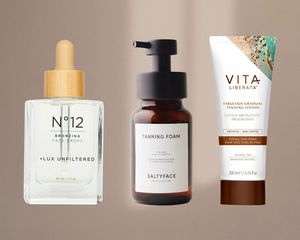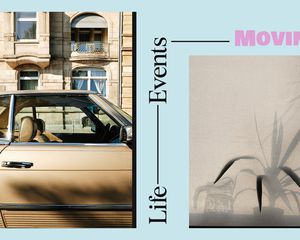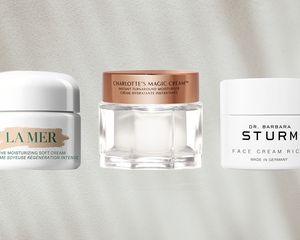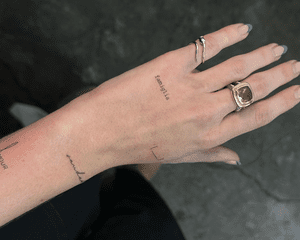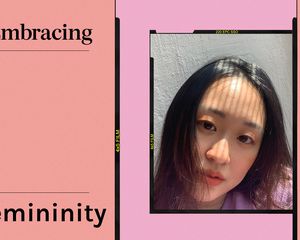My eyes are hot as I try to focus on the ceiling above me. My physical therapist has my leg straightened out and pulled up on her shoulder. Her knuckles grind down the length of my leg, activating my shredded nerves. The pain is deep and red. I’m in a position of total surrender—on my back, contorted, and trying not to cry—as my physical therapist puts her full weight into my injury. I’m only 23, but I’m already bitter. If therapy is supposed to heal my pain, why does it hurt so much
Pain is a business and that business is booming. According to health economists from John Hopkins University, chronic pain costs Americans around $635 billion dollars a year—that's more than the cost of cancer, heart disease, and diabetes. With chronic pain and multiple injuries related to two major car accidents, I’m one of those many Americans spending money to alleviate my chronic pain.
For 10 years, I tried it all—opioids, marijuana, CBD, physical therapy, orthopedic surgery, chiropractic therapy, Tylenol, yoga, epsom salts, turmeric... the list goes on.
What dawned on me in physical therapy took years of insurance disputes, financial assistance from hospitals, bill collectors, and financial support from my parents to understand. Pain, capitalism, and rugged individualism are a noxious, complex mix that indicts, victimizes, and profits off of those in pain. Disabled bodies, or bodies that cannot perform "normally," can be seen as tragic and consumed as inspiration porn. If your ailment is invisible, as mine often is, others will doubt, challenge, and dismiss the severity, or even existence, of that pain.
Stocksy/Design by Cristina Cianci
Pain is a paradox without a playbook—you’re brave to deal with pain, but don’t exaggerate. Sure, pain is bad, pull yourself up by your bootstraps and get to work, no excuses. This kind of mixed messaging is common, but can have serious consequences when it comes to how people—especially Black and Brown women—are treated by the medical establishment.
When I was 21, I went to see my orthopedic surgeon for a post-operation check up. I had multiple screws and metal plates put in my leg to address the multiple fractures I’d suffered during a car accident. An assistant cut open my cast every 10 days so the doctor could inspect my injury’s progress. On this visit, I was informed my foot needed to be re-set at a 90 degree angle to ensure it didn’t end up in a permanent ballerina’s point.
"We need to do this now. If we don't, you'll probably end up needing another surgery,” my doctor said. “We can sedate you, but it’s not really worth it."
Sweat ran down my back. What choice did I have?
It took two men and both my parents to hold me down, while the doctor twisted my foot, pressed it to a 90-degree angle, and then re-cast the injury. My vision went blurry and then dark.
Obviously, this is an extreme example. But what laced through the entire interaction with my doctor, and eventually physical therapists and many other specialists, is the no pain, no gain mentality that many doctors have. During one of the most traumatic experiences I’ve had in the medical industry, anesthesia—pain relief—wasn’t worth using.
We are inundated with messages about pain. These messages are overwhelming, illusory, and contradictory. Everywhere you look—billboards, commercials, spam emails—there are paid messages about how to eradicate pain. But the longer I spend in the pain industry and its (often false) promise of cure, the more I realize there is practically no treatment available that doesn’t use pain as a central tenet of its "healing." Medications have dire side effects, not to mention the very real risk of addiction, while treatments like physical therapy stressed out my body to the point of exhaustion.
:max_bytes(200000):strip_icc()/no-more-pain-vertical-1_photocreditGETTYIMAGES-8ef9231a495841f98216907f6fce2306.jpg)
GETTY Images/Design by Cristina Cianci
Back at my physical therapist’s office, I am already sore. I go three times a week, and afterwards I spend the rest of the day laying down and resting. My body feels permanently stretched thin.
I get into my car and blast the A/C. My body feels like an arrow drawn back—tense and thrumming, totally out of my control. Why do my nerves hurt worse now than before? Why do the experts guaranteeing to fix my pain offer only a different, more expensive flavor of pain? Why do I still believe I can fight pain with pain?
A few weeks later, I finished my final round of physical therapy—ironically with the best, most attentive therapist I’d had—and stopped paying for anything that hurt me. I've had enough free pain to go asking around for more.
The pain industry led me into a toxic, love-hate relationship with my body. I learned to ignore my body's cues, suck it up, and allow my body to be pushed too far in the name of "healing." Doctors and experts never taught or emphasized listening to my body or communicating its needs—I was told to trust the experts without question and my body suffered unnecessarily because of it.
Finally, I was done. I was opting out of pain.
Now, when standing is too much, I sit. When sitting hurts, I lay. I work from bed and have special therapeutic pillows and don’t apologize for my needs. When I’m too exhausted to be social, I cancel plans. I no longer hide or try to shrink my pain away. I no longer add to my body’s burden, either, by trying to push through painful treatment. Instead of seeking the eradication of pain, I live in a new middle ground. There’s more peace there.
Later today, I’m going to see my masseuse. She has a small, cozy studio in her backyard.
"Gentle," I’ll tell her. "This shouldn’t hurt me."
:max_bytes(150000):strip_icc()/Landingpage_hero_desktop-059cef5b387f4b40a3e1b4e31519834e.jpg)
:max_bytes(150000):strip_icc()/B-Sides_recirc1-981112ed82194a159178859896a85e55.jpg)
:max_bytes(150000):strip_icc()/managingsocialanxiety-RECIRC-fade19be96c54fbaa235c1bc61c6fe64.jpg)
:max_bytes(150000):strip_icc()/_USE-New-Edit-postcovidasian-RECIRC-fdd70af9dc784611be0525f8663aed3e.jpg)
:max_bytes(150000):strip_icc()/StatmentLip-RECIRC-2d4fa5792c5f43f18259f82eca700f3d.jpg)
:max_bytes(150000):strip_icc()/Gratitude-RECIRC-03f0d8b15a6845058bb2931fe8b84d1d.jpg)
:max_bytes(200000):strip_icc()/No-Money-On-Pain-PrimarySF-3b68e69e03e64cbd96e4f7c5e905844c.jpg)
:max_bytes(150000):strip_icc()/No-Money-On-Pain-FullBleed-1_photocreditSTOCKSY-29809befed0f4a11819d38ad3447f250.jpg)
